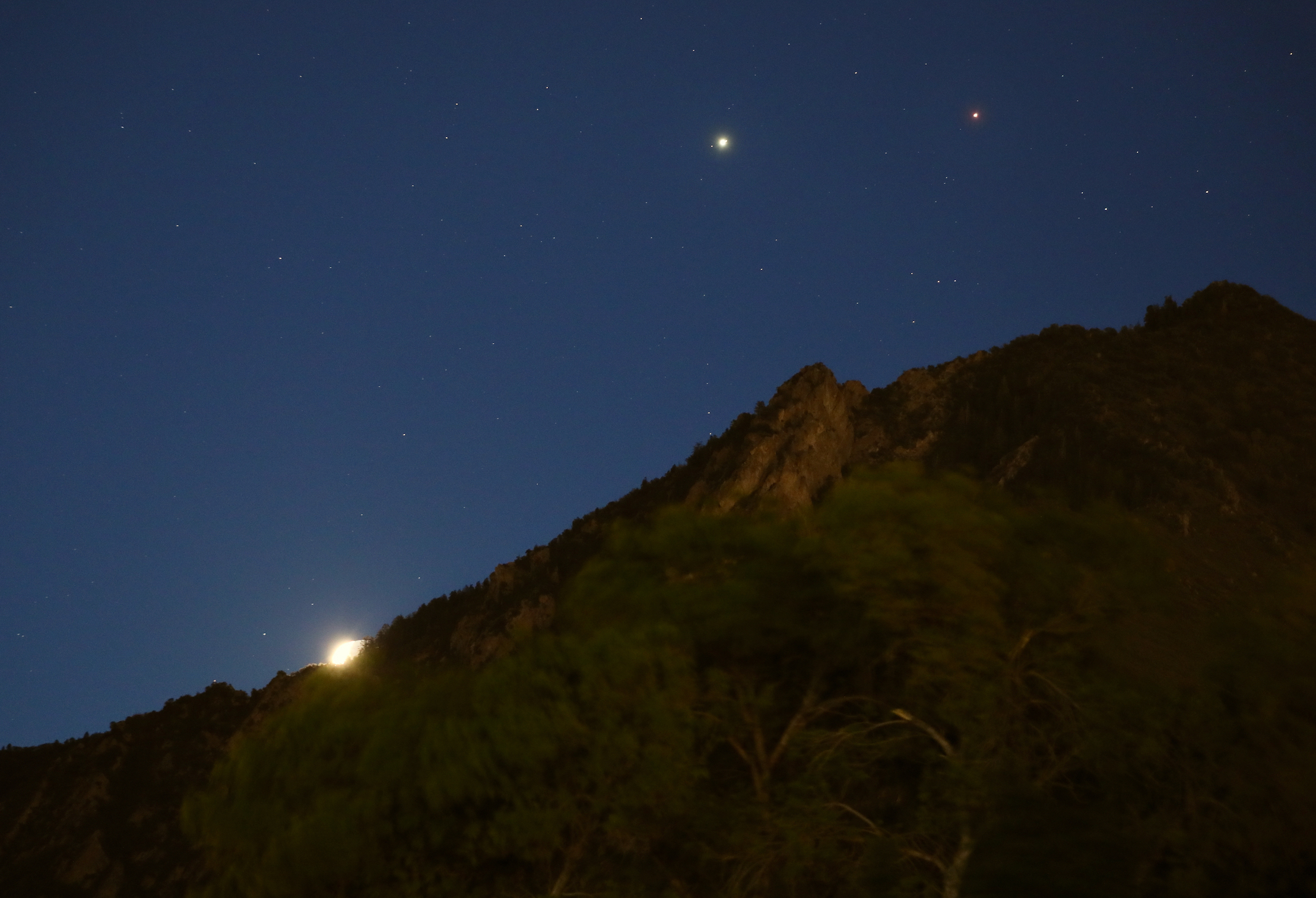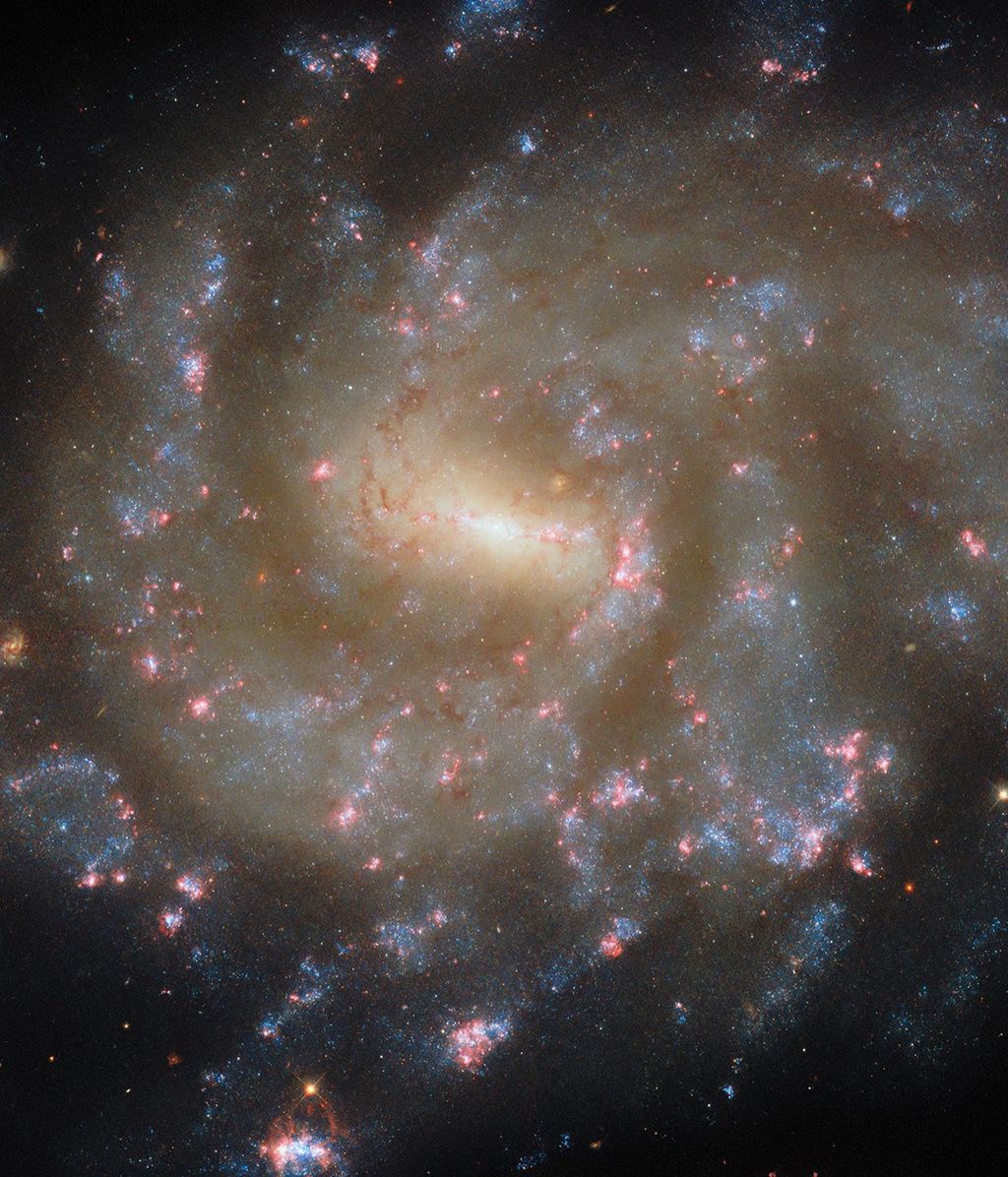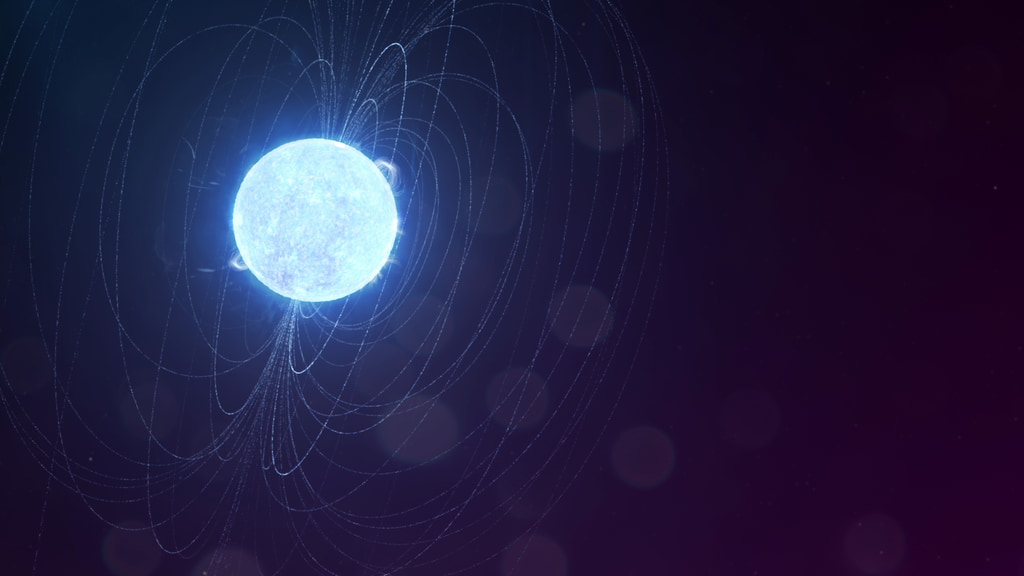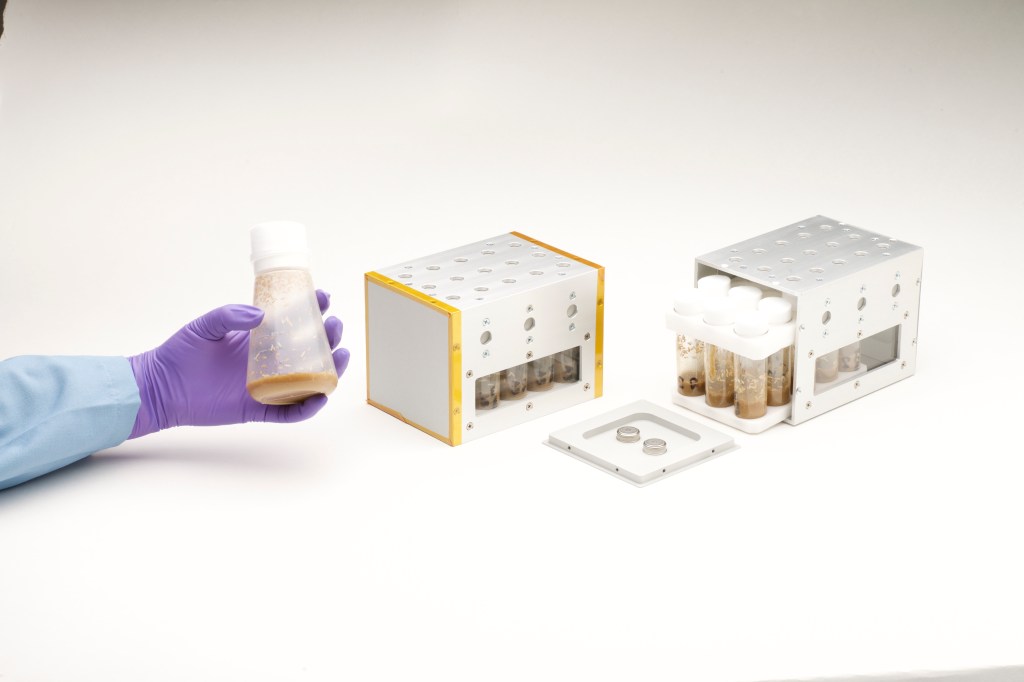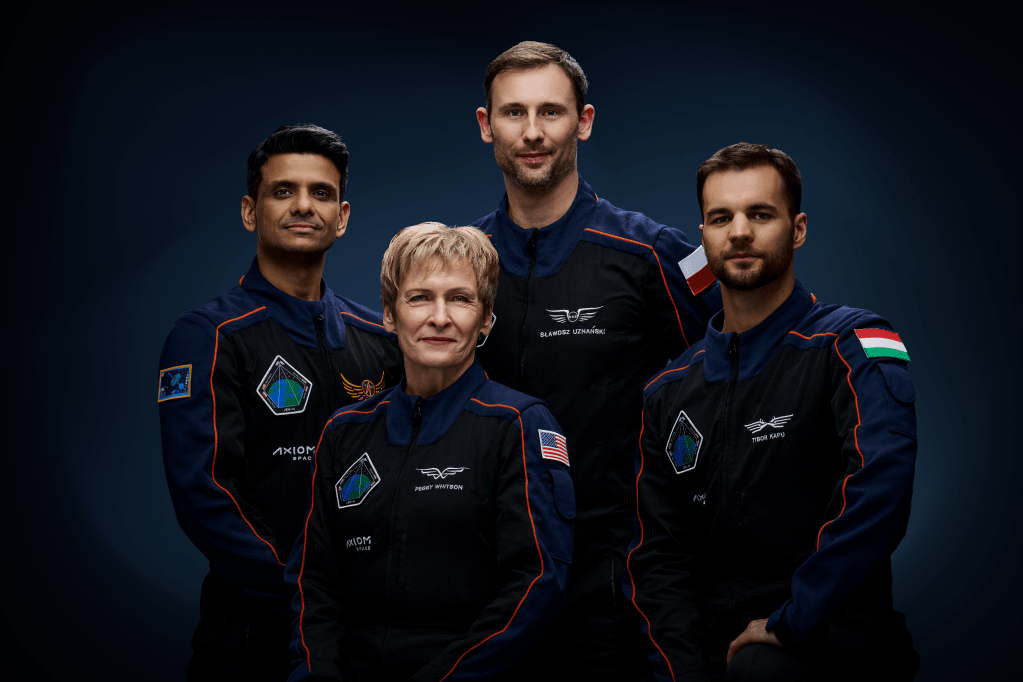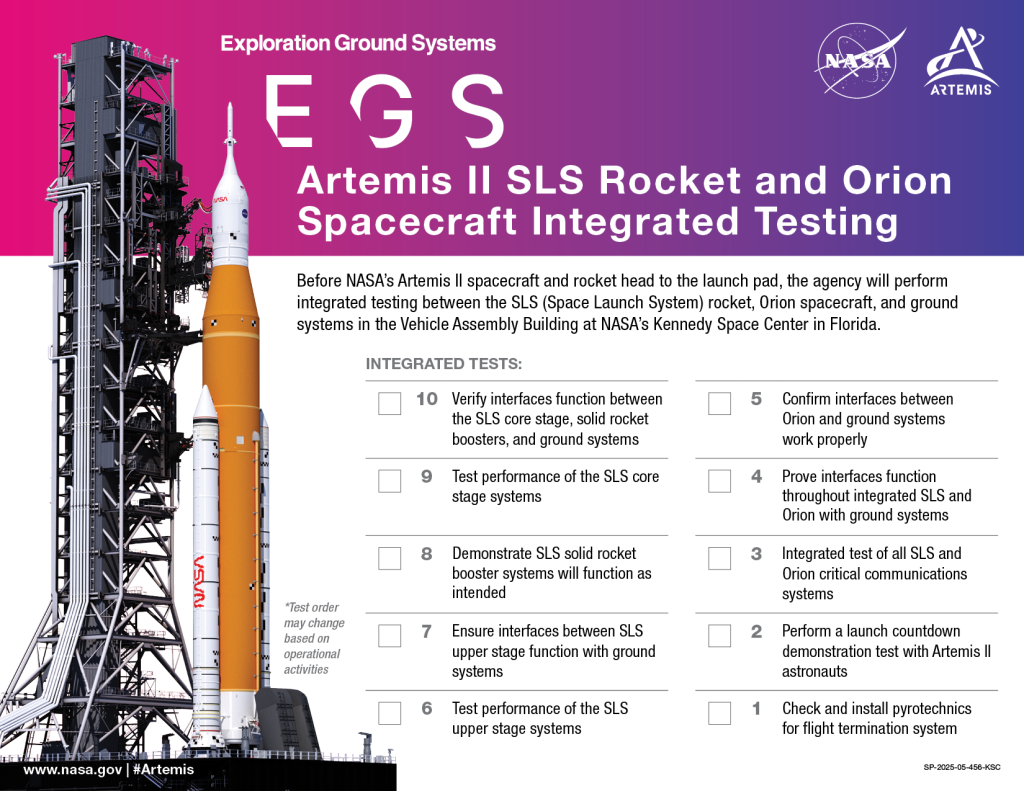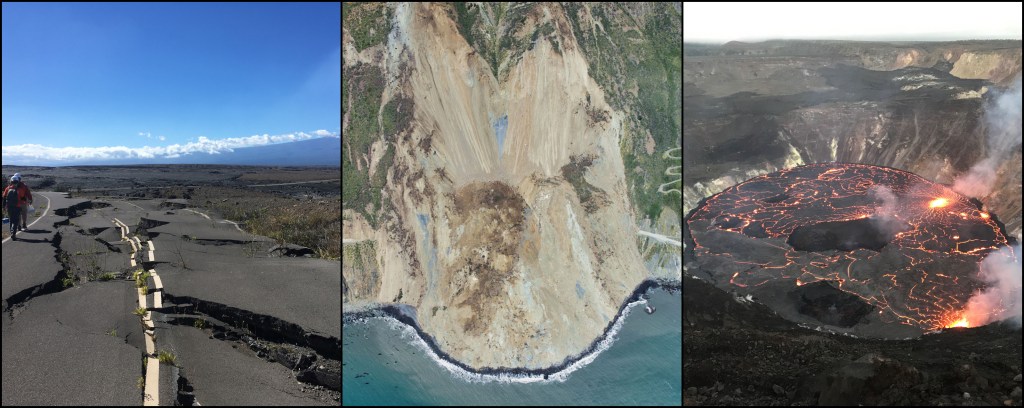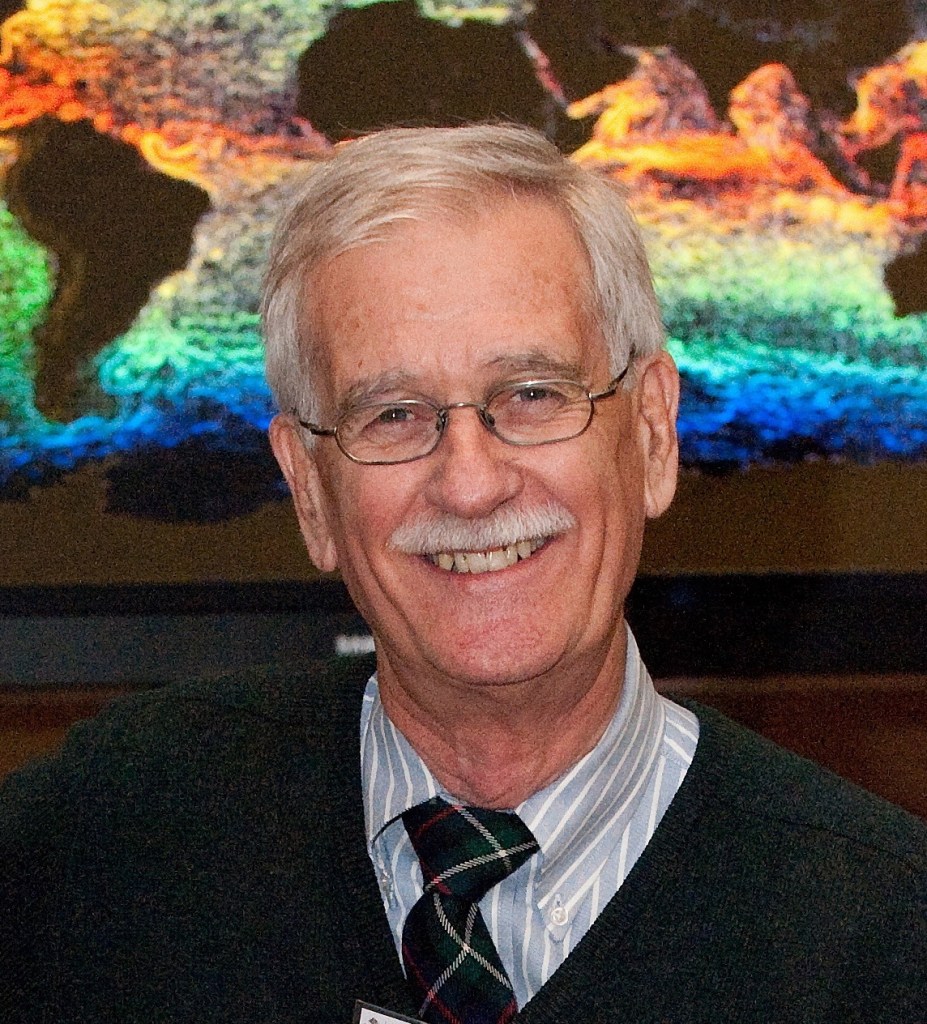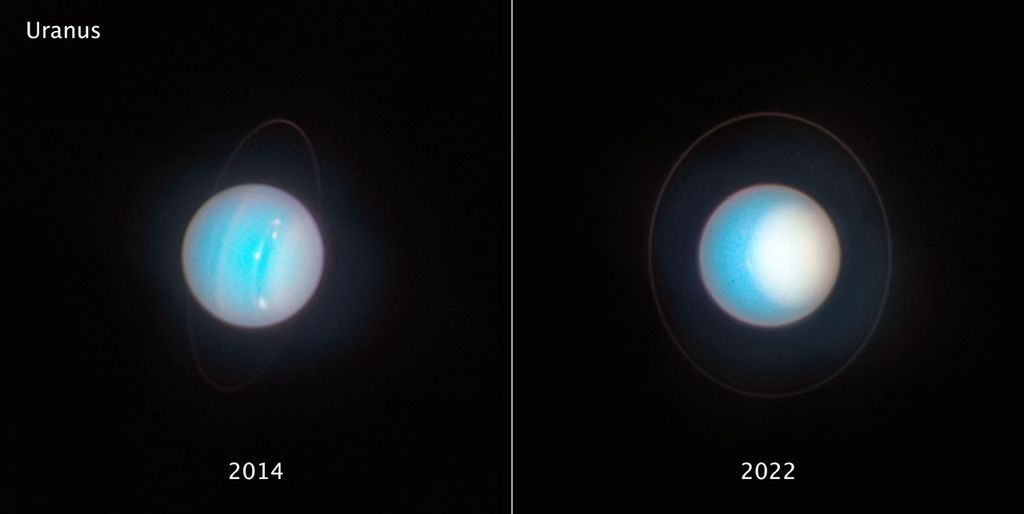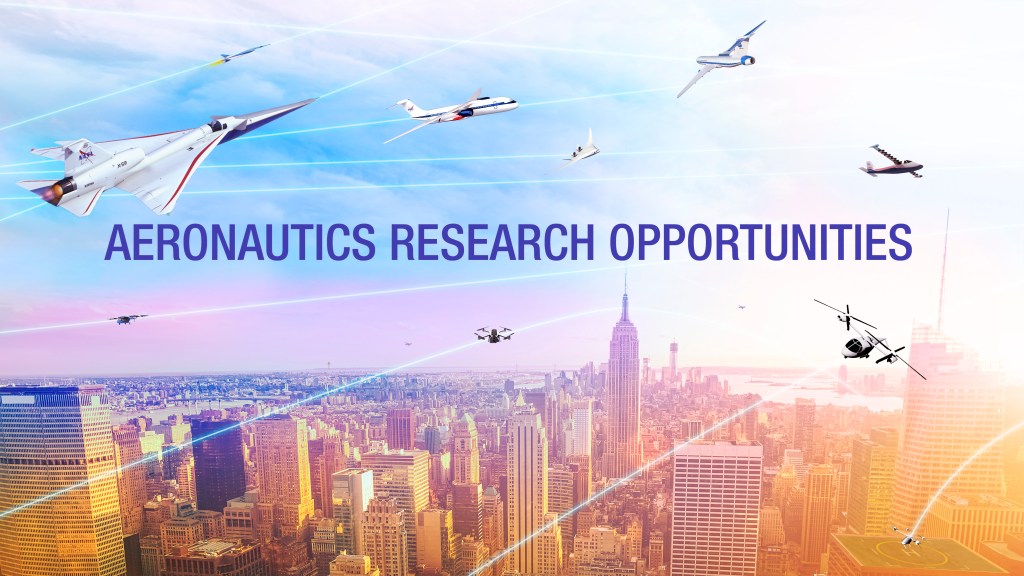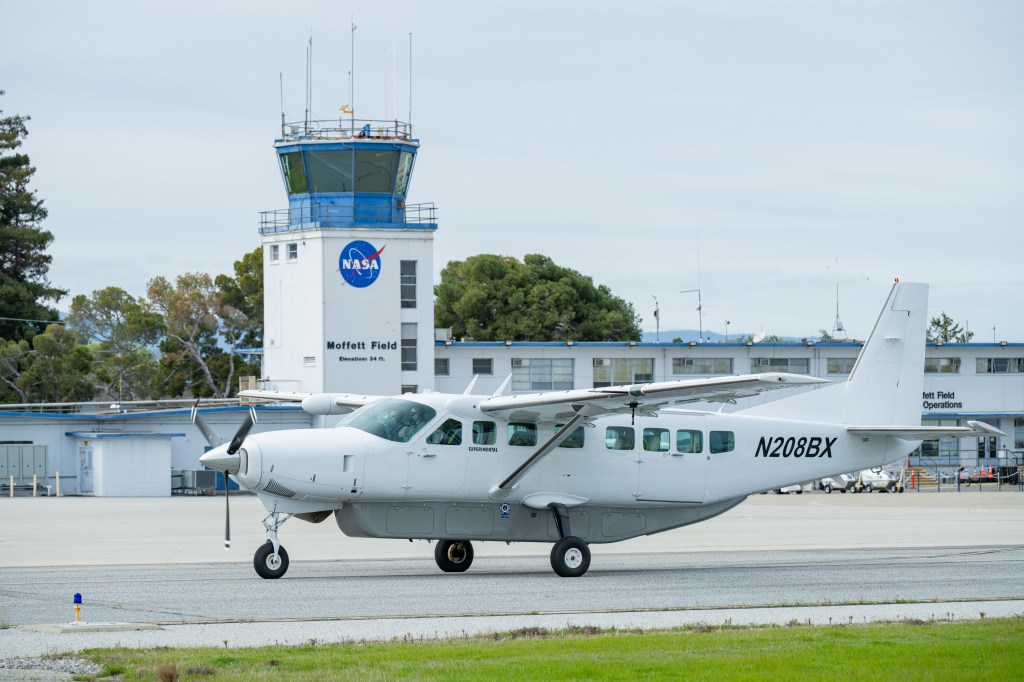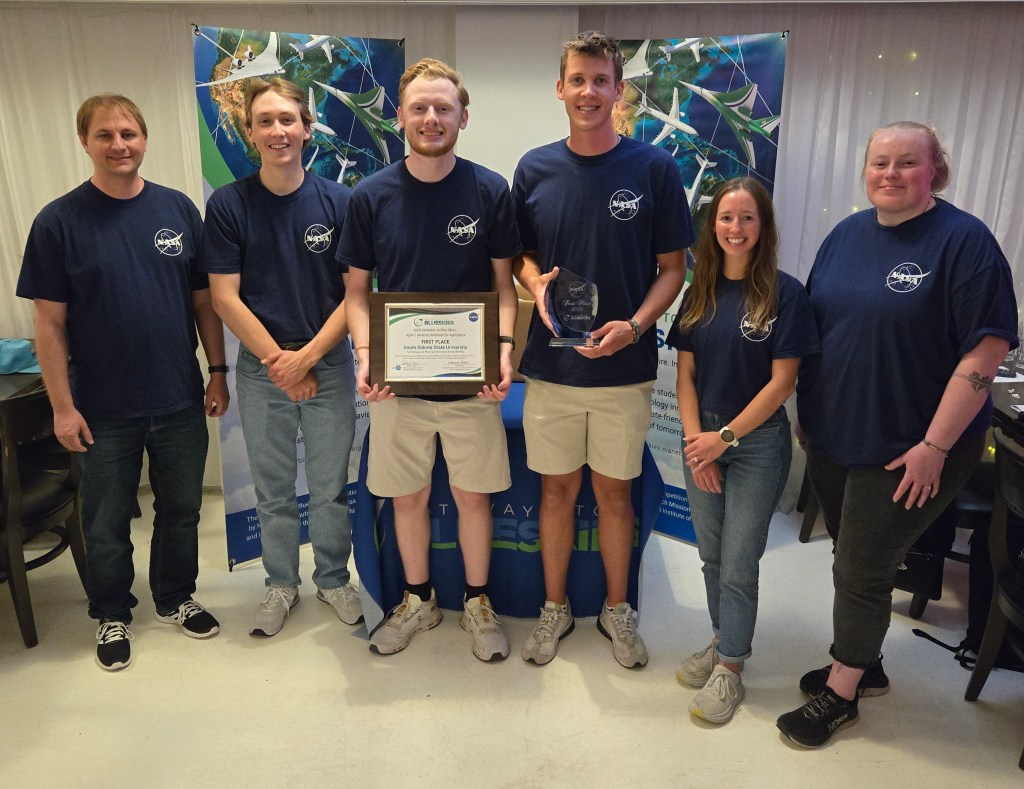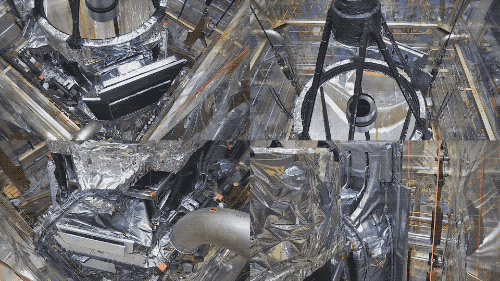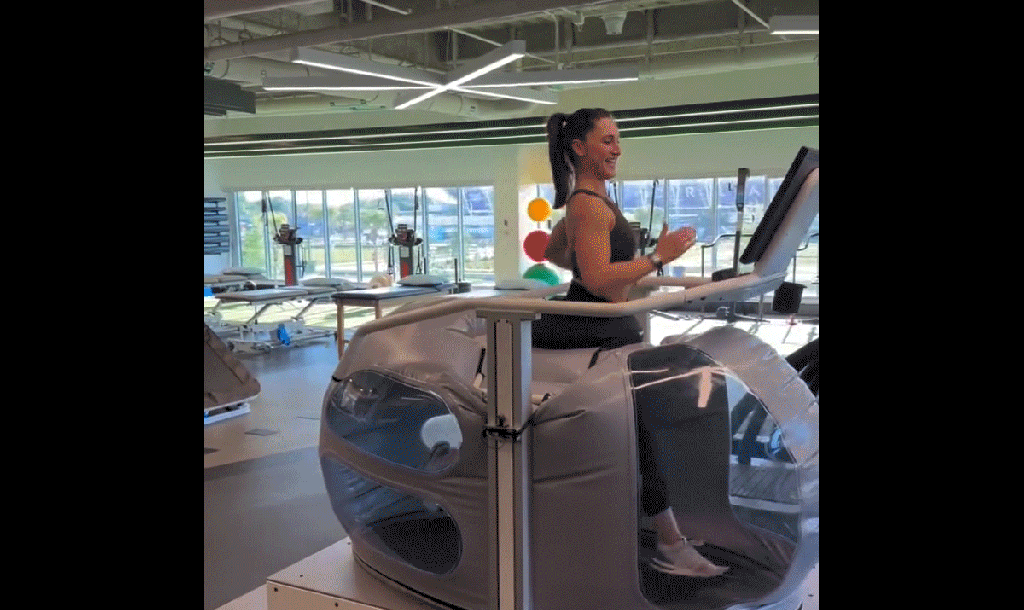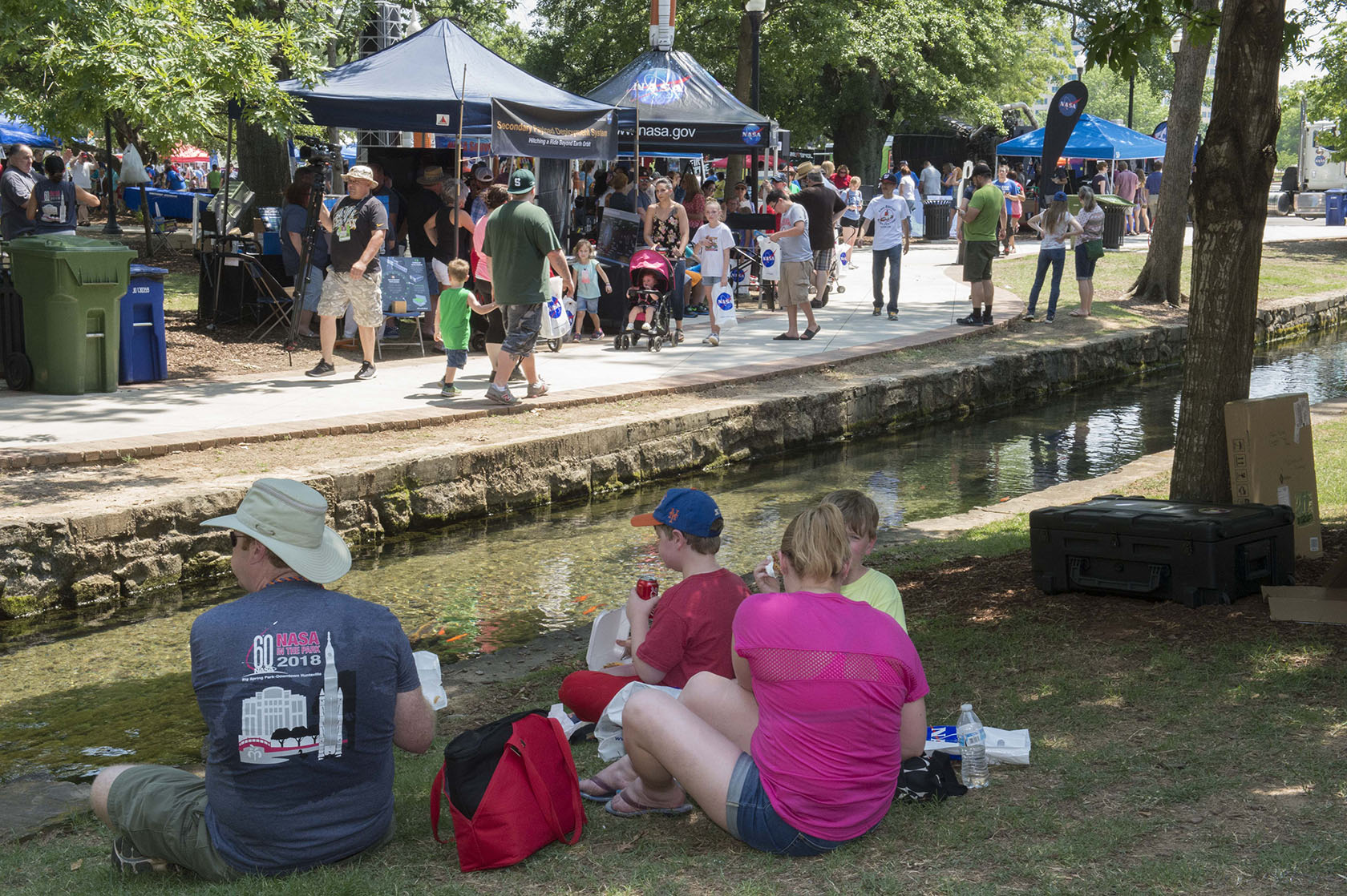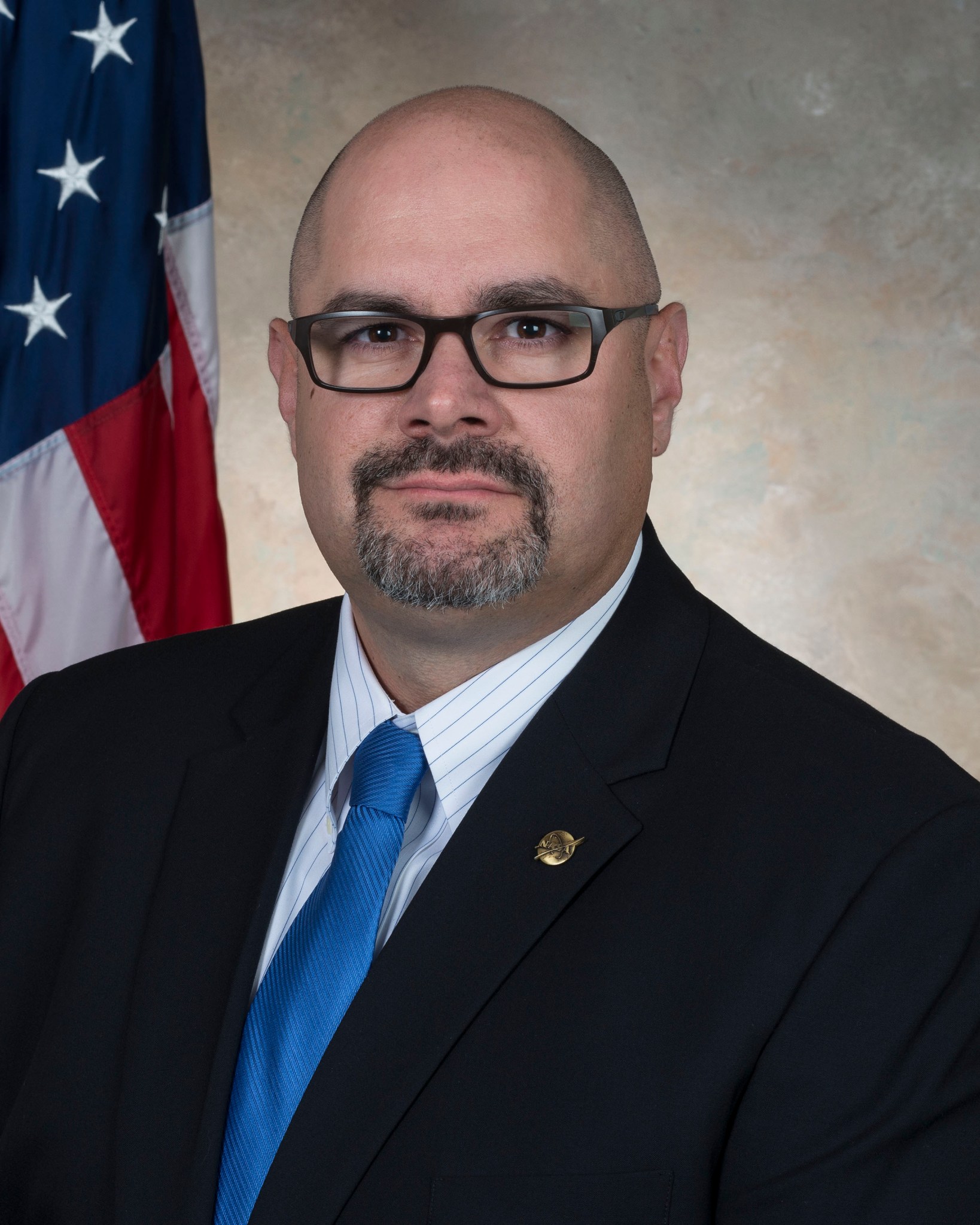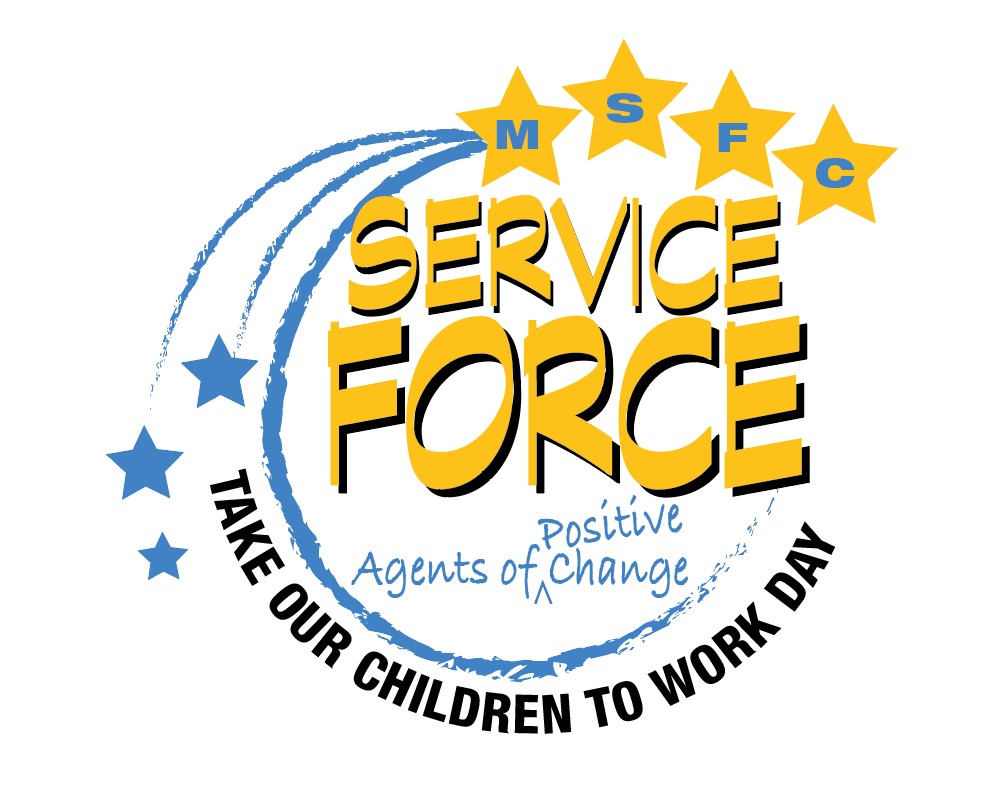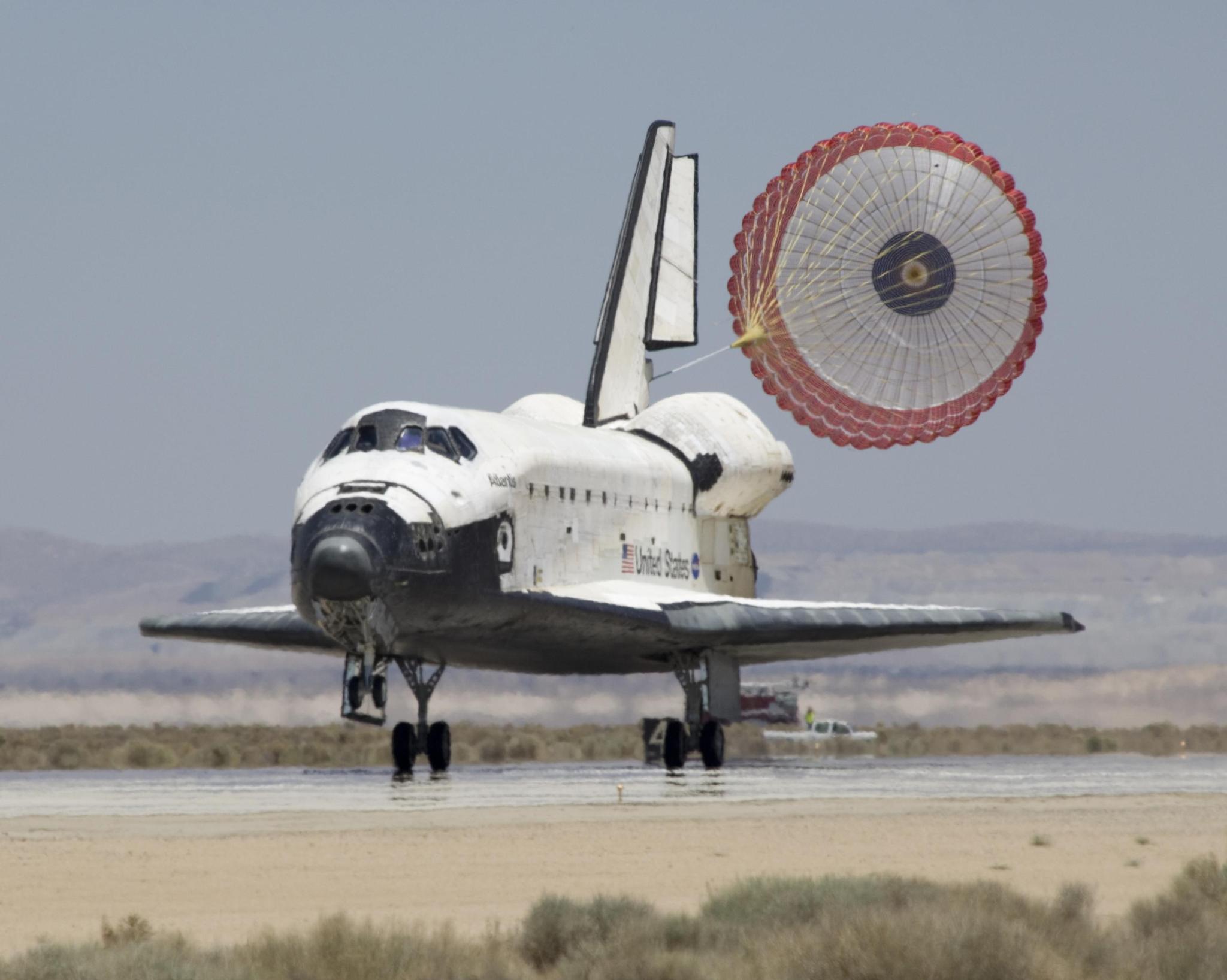In This Week’s Star
- NASA in the Park Draws Large Crowd
- Joseph Pelfrey Named Deputy Manager of Marshall’s Human Exploration Development and Operations Office
- Adventures, Excitement Await for ‘Take Our Children to Work Day,’ June 21
- Record-Setting NASA Astronaut Peggy Whitson Retires
- Rocket Science in 60 Seconds: SLS and Planetary Science Collide
- Spacewalkers Complete HD Camera Installation Work
- Marshall LGBT Event Celebrates Diversity, Equity and Inclusion
- This Week in NASA History: STS-117 Lands – June 22, 2007
- Obituaries
NASA in the Park Draws Large Crowd
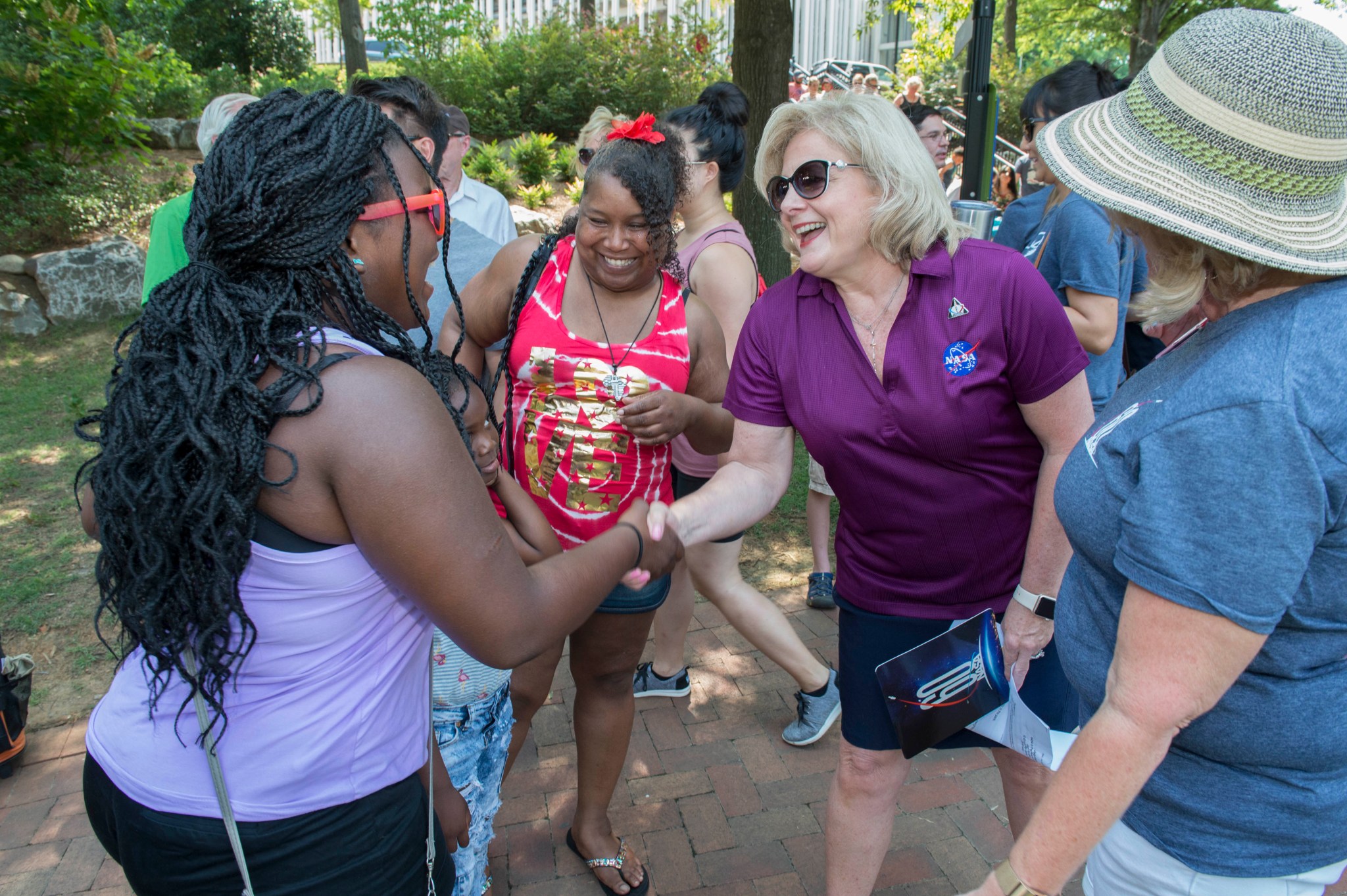
Jody Singer, second from right, deputy director of NASA’s Marshall Space Flight Center, greets Alyssa Slocum, left, who sang the national anthem at NASA in the Park on June 16. Singer, along with Marshall Center Director Todd May and retired NASA astronaut Robert “Hoot” Gibson, made remarks at the event and greeted attendees throughout the day. (NASA/Emmett Given)
Big Spring Park in downtown Huntsville was filled June 16 with over 9,000 visitors eager to learn about NASA’s past, present and future as Marshall celebrated the agency’s 60th anniversary at this year’s NASA in the Park event. (NASA/Emmett Given)
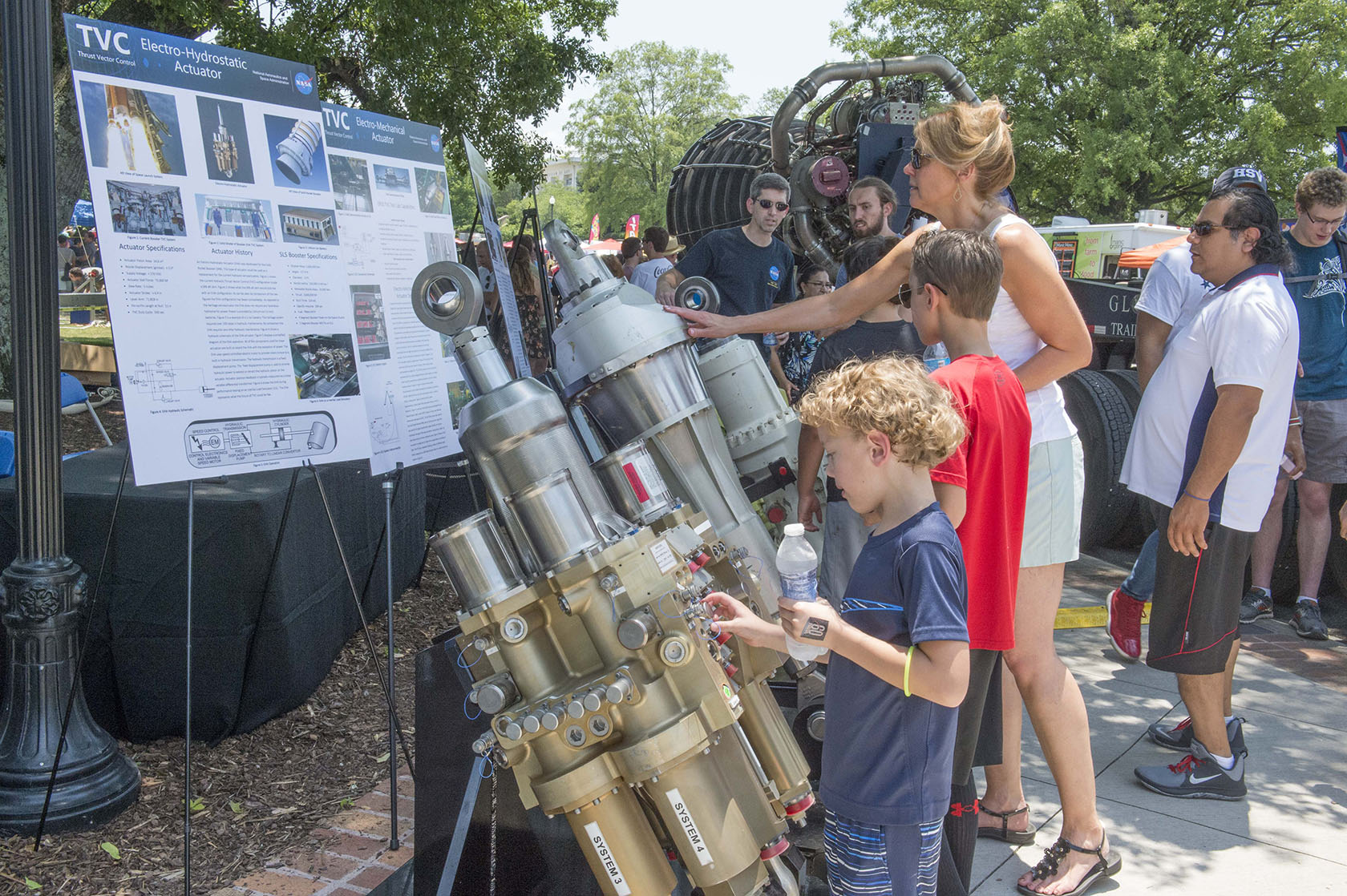
Visitors at NASA in the Park learn about Thrust Vector Control, which will steer NASA’s Space Launch System rocket on the right trajectory. The event featured more than 60 exhibits and demonstrations by NASA experts, as well as performances by Marshall musicians, and hands-on educational activities. (NASA/Emmett Given)
Joseph Pelfrey Named Deputy Manager of Marshall’s Human Exploration Development and Operations Office
Joseph Pelfrey has been named deputy manager of the Human Exploration Development and Operations Office at NASA’s Marshall Space Flight Center.
Succeeding recently retired Paul Gilbert, Pelfrey will assist in managing and implementing Marshall’s work portfolio in the areas of Human Exploration and Transportation projects and tasks; Payload and Mission Operations and Integration; and International Space Station Payload, Facility and Vehicle project development and integration.
In 2016, Pelfrey was appointed to the Senior Executive Service, the personnel system covering top managerial positions in federal agencies, with his selection as associate director for operations in Marshall’s Engineering Directorate. He assisted in the leadership of a diverse, highly technical workforce supporting Marshall’s entire mission portfolio.
From 2012-2016, he was deputy manager and then manager of the Exploration and Space Transportation Development Office in the Flight Programs and Partnerships Office, responsible for leading the team managing Marshall’s Commercial Crew Program, Advanced Exploration Systems portfolio, Orion Launch Abort System, Space Launch System secondary payloads, robotic and human landers, and architecture activities in support of the Human Exploration and Operations Mission Directorate.
Pelfrey joined Marshall’s Engineering Directorate in 2008 as design integration lead for the Ares I Upper Stage. In 2011, he was named engineering task manager for the SLS Spacecraft/Payload Integration and Evolution Office and, subsequently, manager of the Marshall Commercial Orbital Transportation Services Project.
Pelfrey began his career as a NASA contractor supporting development of space station payload hardware. He joined Marshall in 2004 as an aerospace engineer in the Science and Mission Systems Office, serving in various leadership roles within the Space Station Program, leading the development, integration and operations of multiple payload facilities and science experiments.
A native of Cheraw, South Carolina, Pelfrey earned a bachelor’s degree in aerospace engineering from Auburn University, where he currently serves as a member of the Aerospace Engineering Advisory Council.
He and his wife, Nicole, live in Huntsville and have one daughter.
Adventures, Excitement Await for ‘Take Our Children to Work Day,’ June 21
By Will Bryan
The final countdown has begun for NASA Marshall Space Flight Center’s ”Take Our Children to Work Day.” The day full of activities and adventures begins at 8:30 a.m. June 21 in Activities Building 4316. Registration for the event is still open.
In addition to hearing from the former NASA engineer who created the Super Soaker water gun and seeing food instantly frozen with liquid nitrogen, guests for the day will have the opportunity to view the Payload Operations Integration Center, where all science experiments on the International Space Station are managed; observe a 3D scanner demonstration by the Materials and Processes Lab team; and have a chance to learn about the technologies used every day that owe their origins to space exploration.
Open to children and grandchildren of Marshall team members in grades 3-12, the day also includes learning about an electric car racing series for kids, craft stations, a photo kiosk and a showing of the movie “Despicable Me 3.”
The full agenda for the day can be found here. Some of the activities do require pre-registration.
Along with being an ideal opportunity to show young people how their family members contribute every day to America’s space program, “Take Our Children to Work Day” challenges kids to study technical subjects in the classroom — and eventually pursue careers in the STEM fields of science, technology, engineering and mathematics.
Children 15 and younger accompanied by a NASA employee do not require badging for access to Redstone Arsenal and Marshall.
For more information, email Abbie Johnson in the Office of Diversity and Equal Opportunity, which organizes the event.
Bryan, an ASRC Federal/Analytical Services employee, supports the Office of Strategic Analysis & Communications.
Record-Setting NASA Astronaut Peggy Whitson Retires
NASA astronaut Peggy Whitson, who holds the U.S. record for most cumulative time in space, retired from the agency June 15.
“Peggy Whitson is a testament to the American spirit,” said NASA Administrator Jim Bridenstine. “Her determination, strength of mind, character, and dedication to science, exploration, and discovery are an inspiration to NASA and America. We owe her a great debt for her service and she will be missed. We thank her for her service to our agency and country.”
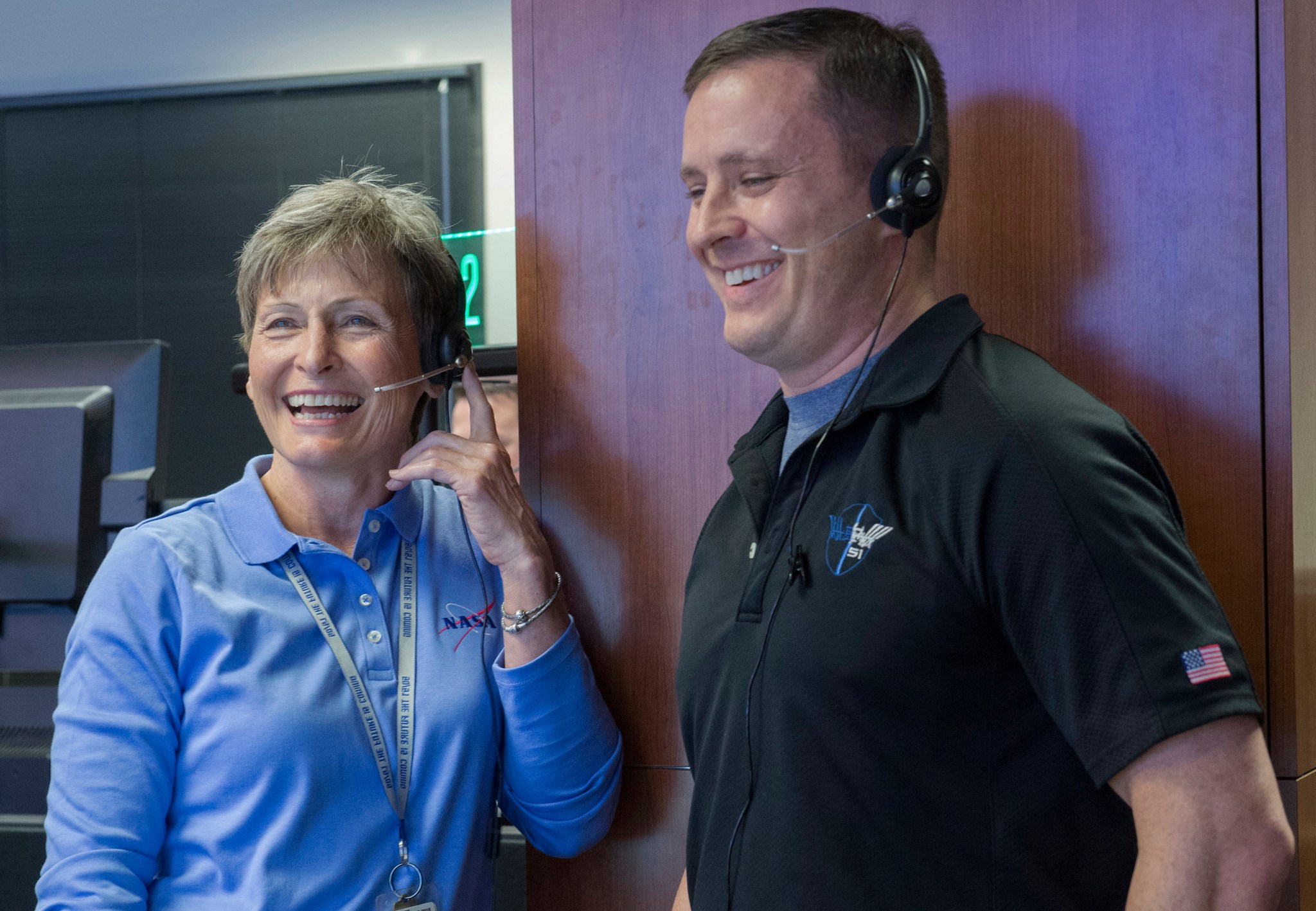
Whitson, a native of Beaconsfield, Iowa, first came to NASA in 1986 as a National Research Council Resident Research Associate at NASA’s Johnson Space Center. She served in a number of scientific roles, including project scientist for the Shuttle-Mir Program and co-chair of the U.S.-Russian Mission Science Working Group, before her selection to the astronaut corps in 1996.
“It has been the utmost honor to have Peggy Whitson represent our entire NASA Flight Operations team,” said Brian Kelly, director of Flight Operations at Johnson. “She set the highest standards for human spaceflight operations, as well as being an outstanding role model for women and men in America and across the globe. Godspeed, Peg.”
As an astronaut, Whitson completed three long-duration missions to the International Space Station, setting records on each. She made her first trip in 2002 as part of Expedition 5, during which she took part in 21 science investigations and became NASA’s first space station science officer. In 2008, Whitson returned on Expedition 16 and became the first female commander of the space station.
During her most recent mission, spanning Expeditions 50, 51 and 52 from November 2016 to September 2017, Whitson became the first woman to command the space station twice. She also claimed the title for most spacewalks by a woman — 10 spacewalks totaling 60 hours and 21 minutes — and set the record for most time spent in space by a U.S. astronaut at 665 days.
Whitson’s time on the ground at NASA was no less groundbreaking. She served as chief of the astronaut corps from 2009-2012, becoming both the first woman to hold the position and the first non-military astronaut corps chief.
“Peggy is a classmate and a friend, and she will be deeply missed,” said Pat Forrester, current chief of the Astronaut Office. “Along with her record setting career, she leaves behind a legacy of her passion for space.”
Rocket Science in 60 Seconds: SLS and Planetary Science Collide
Rocket Science in 60 Seconds gives you an inside look at work being done at NASA to explore deep space like never before. In this episode, Debra Needham, a planetary scientist at NASA’s Marshall Space Flight Center, talks about how planetary science and NASA’s Space Launch System go hand in hand for deep space exploration. For more information about SLS, visit nasa.gov/sls. (NASA)
Spacewalkers Complete HD Camera Installation Work
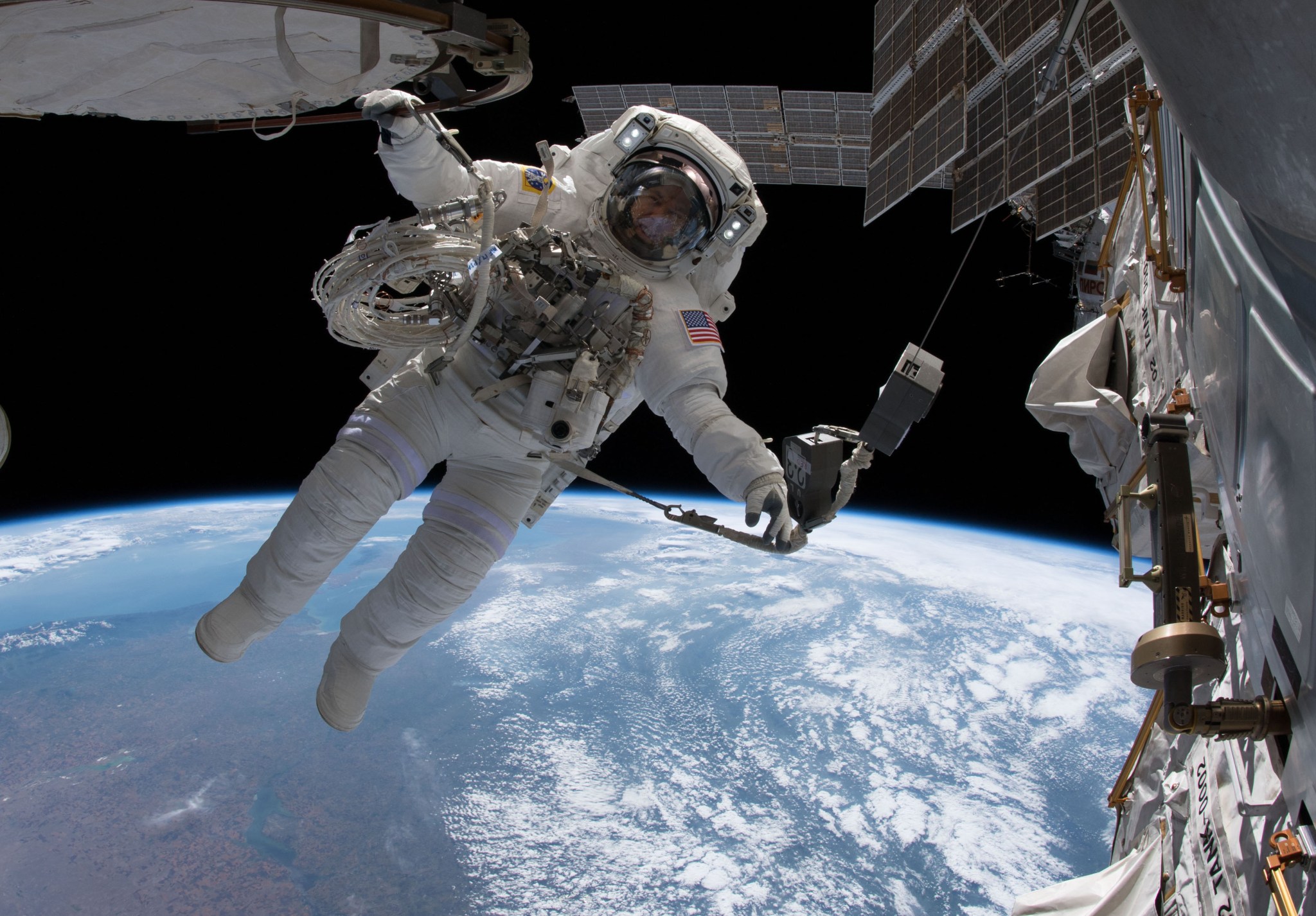
Expedition 56 Commander Drew Feustel is tethered to the International Space Station June 14 during a spacewalk he conducted with fellow NASA astronaut Ricky Arnold. During the 6 hour, 49 minute spacewalk, the duo successfully installed new high-definition cameras that will provide enhanced views of approach and docking of spacecraft for NASA’s Commercial Crew Program. With industry partners SpaceX and Boeing, the Commercial Crew Program will soon launch astronauts to the space station from American soil. During the spacewalk, the ninth of Feustel’s career, he moved into third place for total cumulative time spent spacewalking, with a total of 61 hours and 48 minutes. To learn more about the 211th spacewalk in support of the orbiting laboratory, click here. (Roscosmos/Oleg Artemyev)
Marshall LGBT Event Celebrates Diversity, Equity and Inclusion
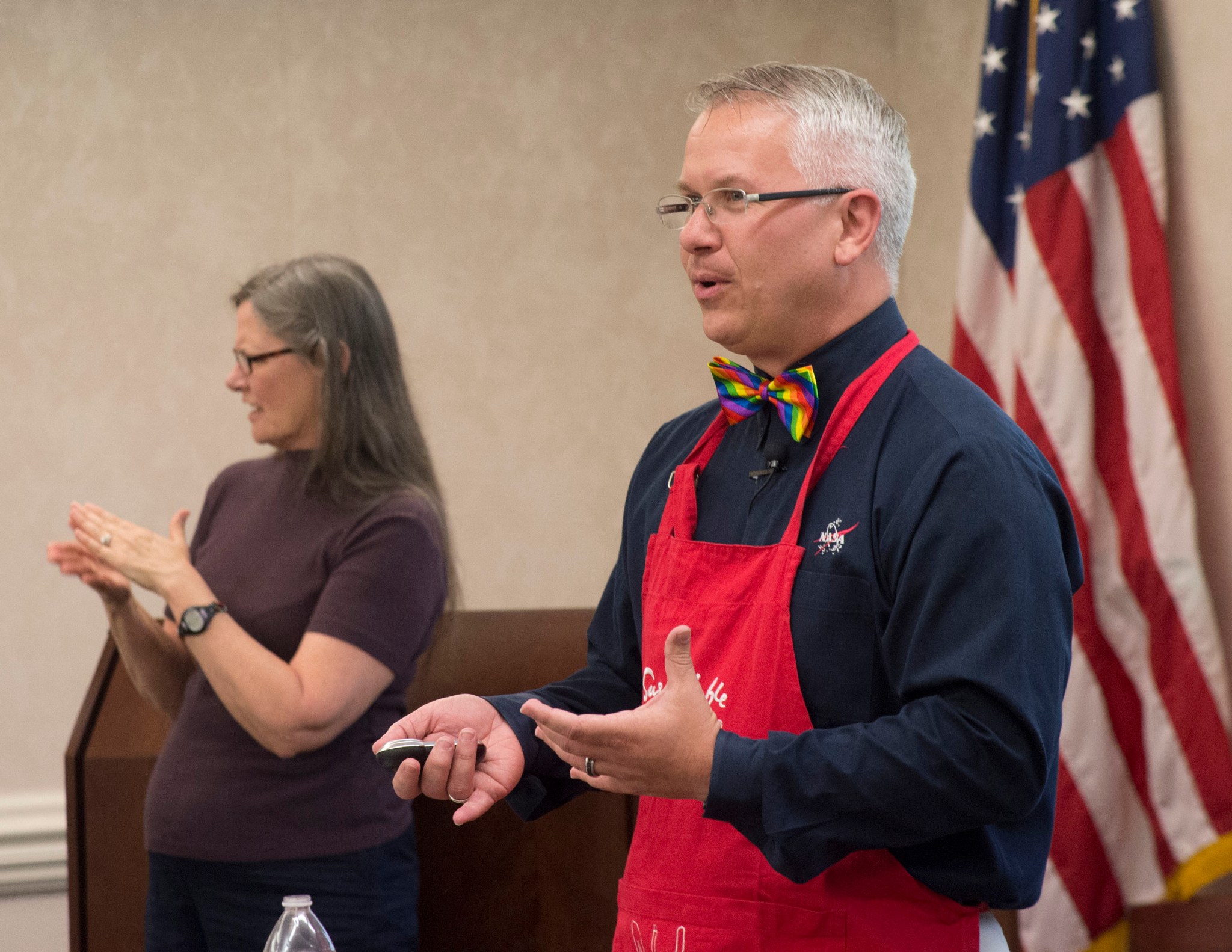
Steve Riley, deputy chief of NASA’s Space Vehicle Mockup Facility at Johnson Space Center, speaks at Marshall Space Flight Center’s Lesbian, Gay, Bisexual and Transgender Special Emphasis Program celebration June 14. The chairman of Johnson’s Out and Allied Employee Resource Group and a lifelong advocate and role model for the LGBT community, Riley discussed the influence of diversity, equity and inclusion of the LGBT and Allied community in STEM-related fields at NASA. The event was sponsored by Marshall’s Office of Diversity and Equal Opportunity, which strives to promote diversity, equality and inclusion for all individuals, while providing a workplace that is free from discrimination, including harassment and retaliation. (NASA/Marshall/Emmett Given)
This Week in NASA History: STS-117 Lands – June 22, 2007
This week in 2007, the space shuttle Atlantis, mission STS-117, landed at Edwards Air Force Base following the completion of a successful 14-day mission to the International Space Station. The primary mission objective was to deliver the second and third starboard truss segments, S3 and S4, and another pair of solar arrays to the station. Today, the Payload Operations Integration Center at NASA’s Marshall Space Flight Center serves as “science central” for the space station, working 24/7, 365 days a year in support of the orbiting laboratory’s scientific experiments. The NASA History Program is responsible for generating, disseminating, and preserving NASA’s remarkable history and providing a comprehensive understanding of the institutional, cultural, social, political, economic, technological and scientific aspects of NASA’s activities in aeronautics and space. For more pictures like this one and to connect to NASA’s history, visit the Marshall History Program’s webpage. (NASA)
Obituaries
John Kirby Morris, Sr., 89, died June 10. He retired from the Marshall Center in 1994 as an electrical engineer. He is survived by his wife, Nancy J. Morris.



